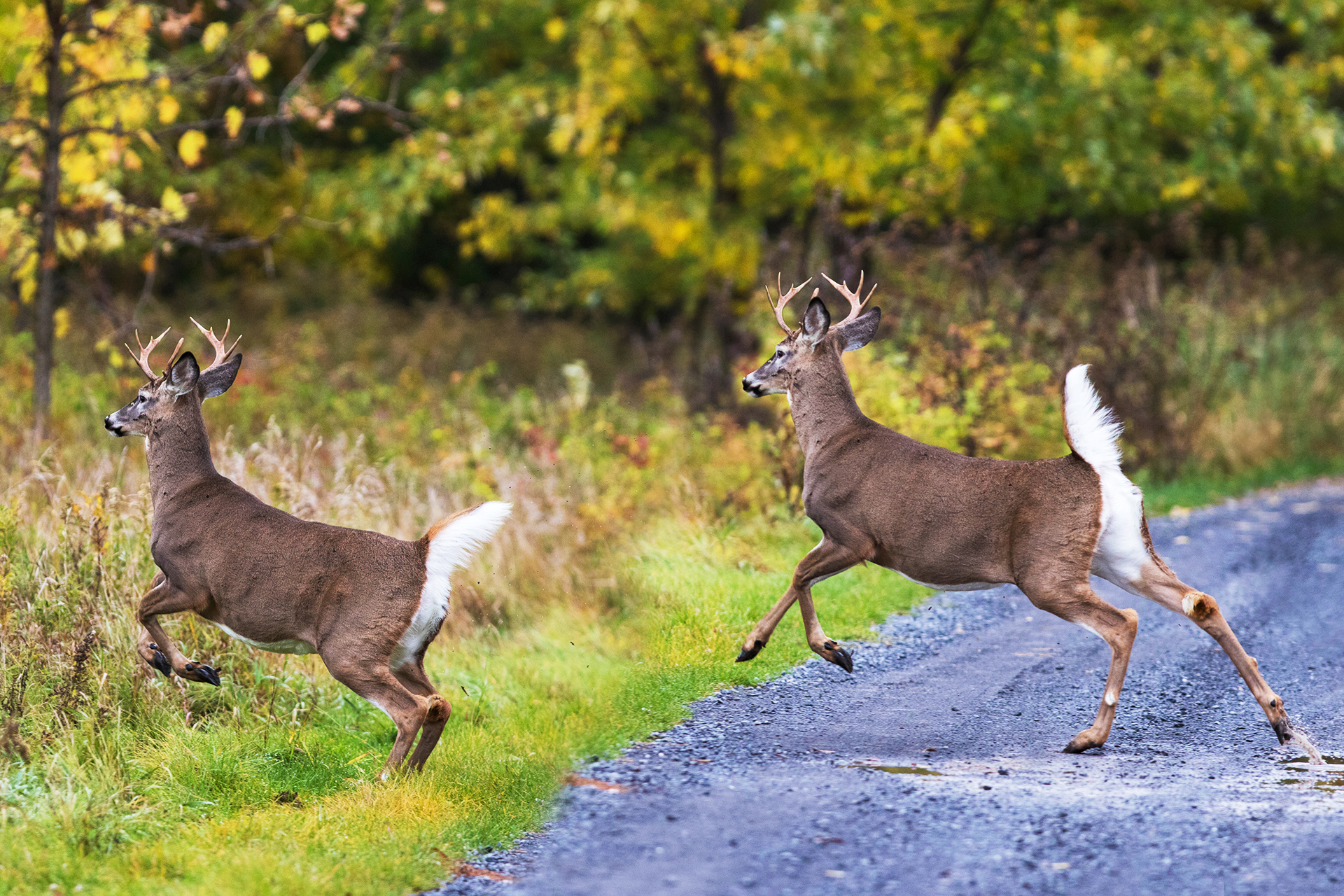The SARS-CoV-2 coronavirus behind the COVID-19 pandemic is not yet gone, and not only is it still infecting humans on a large scale, but according to a new study, it has jumped from humans to white-tailed deer, where it appears to evolve rapidly.
Wipe the noses of deer
According to previous research, the virus may now be common among white-tailed deer in parts of the United States.
In the new study, published in the journal Nature Communications, researchers investigated SARS-CoV-2 infection by scanning the noses of freely grazing deer across Ohio between November 2021 and March 2022, and used nasal swabs to sample 1522,83 deer found in 88 of the state's <> counties.
Genetic analysis of the swabs showed active SARS-CoV-2 infection in 10% of deer, with at least one positive case found in 59% of the provinces tested.
The researchers also collected blood samples from a number of deer to look for evidence of previous infections, and the samples indicated the presence of specific antibodies. Based on those findings, researchers estimate that approximately 24 percent of Ohio deer have been infected with SARS-CoV-2 at some point.
Researchers collect blood samples from deer to look for evidence of past injuries (Getty Images)
Interspecific infection
Study co-author Andrew Bowman and a veterinary epidemiologist at Ohio State University says, "We generally talk about interspecific transmission as a rare event, but it seems to be transmitted between people and animals quite easily."
The researchers suggest that white-tailed deer may serve as a reservoir for the virus, potentially spreading it to other wild animals, livestock and humans. "Evidence is mounting that humans can get it from deer, and that's not radically surprising," Bowman says.
Bowman and his colleagues detected the coronavirus in Ohio deer at 9 locations in December 2021, and found it was more prevalent near dense human populations.
In the press release posted on the Ohio State University website, Bowman says they expanded research across Ohio to see if this was a local problem but found it in a lot of places, so it turned out not just a local event.
He adds that they thought it might be in urban deer just because they are in close contact with people, but they found deer in rural areas of the state positive.
The genetic makeup of the Delta variants in deer was identical to that of humans (Getty Images)
Breeds and genes
Several deer showed evidence of exposure to the highly contagious Delta strain, which was the most prevalent strain among humans in the United States during the study period, and there were also signs of the alpha variant, which peaked among humans in 2021.
The researchers reported that the genetic makeup of the Delta variants in deer matches that circulating among humans at the time, and this indicates the "spread" of the virus from humans to deer.
The study found that after a deer somehow picked up the coronavirus from a human, the virus apparently began to spread among wild deer in groups, with some groups expanding beyond a single county.
"There's probably a timing element to what we found, we were near the peak end of the Delta variant in humans, and then we saw a lot of delta in the deer," Bowman says. He adds that the idea that deer retain strains that have since survived the virus in humans is something that worried researchers.
Coronavirus variants taken from deer are capable of wreaking havoc on pets or wildlife (Shutterstock)
Possible destruction of domestic and wild animals
According to the press release, the SARS-CoV-2 virus evolves in deer more quickly than in humans, according to mutation screening in viral samples, although it is still unclear what exactly this entails for us. The virus may evolve further in deer and spread to us again, but even if it does, the study suggests that vaccination against coronavirus provides protection.
According to the statement, even if coronavirus variants taken from deer do not pose a direct threat to us, they can still wreak havoc on pets or wildlife. According to the data so far, Bowman points out that about 70 percent of the white-tailed deer roaming freely in Ohio have not yet been exposed to SARS-CoV-2.
"If this path continues for years, and we have a virus adapting to deer, will this become the route that leads to infecting other host animals, wildlife or domestics? We don't know."

